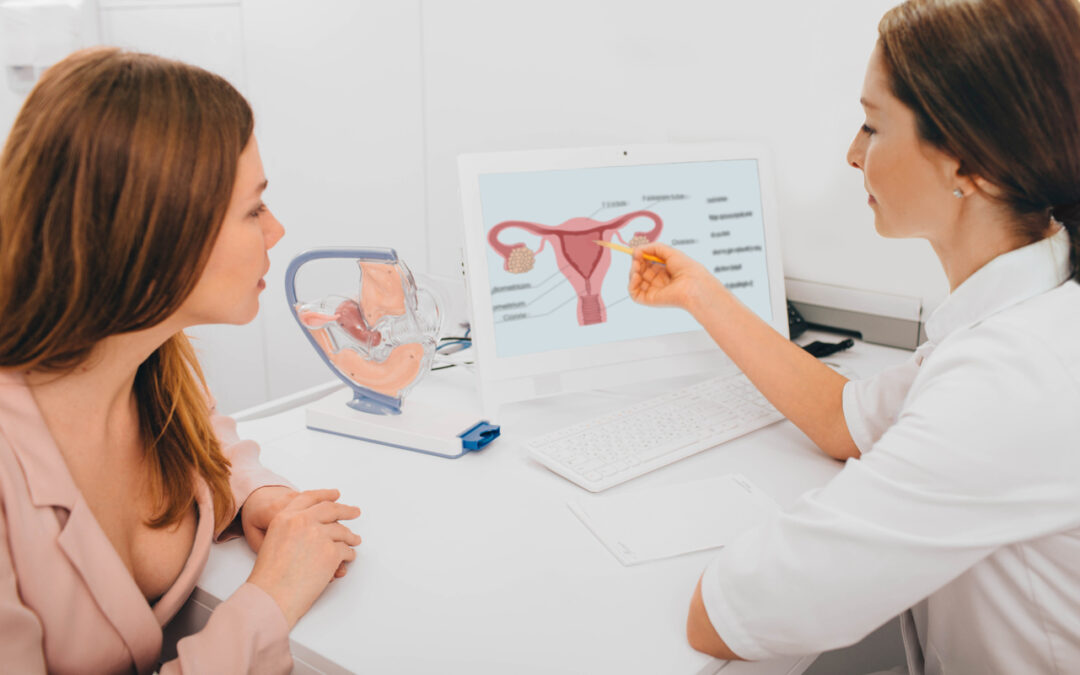The fibroid of the uterus is one of the most common benign tumors of the female reproductive system: it affects women of childbearing age (between 25 and 45 years) compromising the quality of life and femininity.
Uterine fibroid is a benign tumor mass that develops from the smooth muscle cells of the uterus and the connective tissue of the wall of the uterus. The process that leads to the formation of the fibroid is not known exactly: what is known is that, in this process, estrogens are involved that favor the multiplication of cancer cells.
This is proved by the fact that the fibroid greatly increases in volume in pregnant women who have a high level of estrogen; on the contrary, fibroids tend to shrink after menopause.
They can grow in different parts of the uterus and the size can vary greatly to over 15-20 cm in diameter.
Uterine fibroid: What can be the symptoms?
It is estimated that, in 50% of cases, uterine fibroids are asymptomatic and, often, are detected during gynecological check-ups.
For the remaining 50%, affected women experience annoying and disabling symptoms such as:
- Abundant menstruation that can causes anemia;
- Abnormal intermenstrual bleeding (menorrhagia, menometrorrhagia);
- Severe abdominal pain;
- Painful sexual intercourse;
- Acute and chronic pelvic pain, especially if the fibroid grows and degenerates;
- Disorders of urination and constipation as the tumor mass presses on the bladder and intestines.
What can be the complications?
Regarding complications, in addition to sexual disorders, fibroid can impair the ability to conceive (infertility) or to carry a pregnancy to term.
During pregnancy, uterine fibroid can cause:
- miscarriage;
- premature contractions;
- postpartum hemorrhage;
- fetal abnormality of the size or position of the fetus responsible for a difficult delivery.
It, also, negatively affects all the aspects of women’s life (couple life, motherhood, work, interpersonal relationships, sports, leisure, etc.).
What treatment options do I have?
Treatment of uterine fibroids can be medical, surgical and radiological.
Myomectomy is the removal of uterine fibroids laparoscopically. At the basis of the surgical outcomes of the myomectomy, there are the experience of the surgeon and the quality of the suture. Suturing with the robot reduces the total time of surgery and the bleeding of the uterine muscle. Laparoscopic surgery, in addition to avoiding the scar on the abdomen, seems to reduce the possibility of adhesions, an important factor especially in childbearing age in women who are looking for children. The average hospital stay is 2 days.
Hysterectomy is the surgery by which the uterus is removed. We speak of total hysterectomy when the operation leads to the removal of the entire organ, and of partial or subtotal hysterectomy when the neck or cervix is preserved. Hysterectomy forever compromises the possibility of becoming pregnant. In any case, the operation does not significantly affect either desire or sexual activity, even if the libido could be negatively affected by the psychological implications of the intervention.
The contraceptive pill is useful in the control of symptoms related to uterine fibroids, but sometimes it is not sufficient for a series of complex reasons that depend on the type of fibroid and the estrogenic content of the formulations. According to data from the Family Planning Association in Great Britain, the relative risk of surgery for the presence of uterine fibroids decreases with the duration of use of hormonal contraception. Women who had taken the contraceptive pill for more than 12 years were half as likely to have a myomectomy (removal of myomas) compared to women who had not taken it.
Gonadotropin-releasing hormone (GnRH) agonists are often the drugs of choice. They can reduce the size and bleeding of the fibroid. They must be administered in the following way:
- Via IM or under the skin
- Like a subcutaneous ball
- As a nasal spray
Gonadotropin-releasing hormone (GnRH) agonists can reduce estrogen production.
They are most useful when used preoperatively to reduce the volume of the fibroid and uterus, making surgery more technically feasible and reducing blood loss during surgery.
Generally, these drugs should not be used for long-term treatment as they can cause rebound growth to pretreatment size within 6 months, and bone demineralization. To avoid bone demineralization when these drugs are used long-term, doctors should give patients supplemental estrogen such as a low-dose estrogen-progestogen combination.
Tranexamic acid (an antifibrinolytic drug) can reduce uterine bleeding by up to 40%. The normal use is for up to 5 days. The administration of tranexamic acid should take place with particular caution in some categories of patients for example the ones suffering from heart or liver diseases. Tranexamic acid should not be used during pregnancy, given the haemodynamic effects induced by tranexamic acid. Also, it is partly secreted in breast milk, therefore it is not recommended for use during breastfeeding.
An important therapeutic help can also come from natural therapies such as food supplements. In this regard, is important to focus the attention on the new supplement available for helping patients with uterine fibroids: DELPHYS®. It is a food supplement based on vitamin D, epigallocatechin gallate (EGCG) and vitamin B6, useful for providing an additional share of these substances in case of reduced dietary intake or additional needs. Vitamin D intervenes in the cell division process, while vitamin B6 contributes to the regulation of hormonal activity, and EGCG are involved in the process that suppress the growth of the cells.
There are new scientific evidence that have shown that this nutrients are safe and could help these patients.

Recent Comments